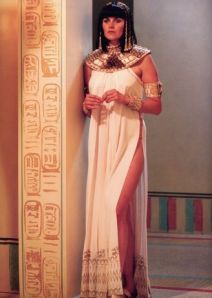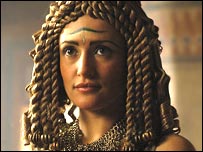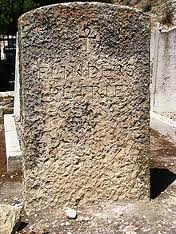Taking another small breather from Egyptology, I have to dedicate a post for one of the greatest actress, and as Yahoo News put it “one of old Hollywood’s last larger-than-life legends“, Elizabeth Taylor who passed away on 23/03/2011.
Elizabeth Taylor appeared in many good films such as “Cat on a Hot Tin Roof”, “A Place in the Sun”, “Ivanhoe” and even an Agatha Christie thriller “The Mirror Crack’d” (though this is not the best version of the book). But there is one film where she will be remembered the most, “Cleopatra”. The lovely, beautiful and graceful Elizabeth Taylor portrayed one of the most unusual women in all of history, the queen of Egypt from the first century B.C. Cleopatra VII (c. 69 – 12/08/30 B.C.). Cleopatra was considered a beauty of the time who succeeded in capturing the hearts of two of the most hardest and powerful men of her time, Julius Gaius Caesar and Marcus Antonius. Or as we know them in the film – Rex Harrison and Richard Burton.
One of the most famous scenes in the film is the first meeting between Cleopatra and Julius Caesar. At the time Cleopatra and her brother, Ptolemy XIII, were not exactly on good terms. Well… actually, Cleopatra wanted her brother/husband dead so she could become sole ruler and Ptolemy just wanted to get rid of his meddlesome sister/wife once and for all so that he could rule Egypt in peace. (lovely family). Anyway, they both turned to the mighty Roman empire via Julius Caesar, who had his own plans for Egypt. Because Cleopatra was banned from coming into the palace where Caesar was, she devised a plan which intended to get her to Caesar and to entice him at the same time to be on her side of the conflict. Her guard smuggled her into the palace by rolling her up in a carpet. Ceasar/Harrison kept pointing his big sword at the carpet before finally allowing it to unroll thus reveling a beautifully tidy Cleopatra, slightly sweaty, who then got up behaving as though this occured eveyday and absolutely dazzled the hard warrior! (I don’t know about you, but after being carried around in a carpet I would have been disoriented and my hair would have looked like a mess. But then, we can’t all be like Cleo/Lizzy!). There is such a legend that Cleopatra met Caesar though I don’t know when that legend was born but in modern times it has become so famous that it is used often in the media. Xena used this trick when she pretended to be Cleopatra (this was after Cleopatra was murdered by a viper) to find her way into Mark Antony’s tent (Xena: Warrior Princess, season 5 episode 18; ‘Cleopatra and Antony’). It was also used in the HBO series of Rome when Cleopatra met Caesar (season 1, episode 8; ‘Caesarian’).
In short, Elizabeth Taylor gave a brilliant performance and was the first actress ever to receive one million dollars! She deserved it too.





